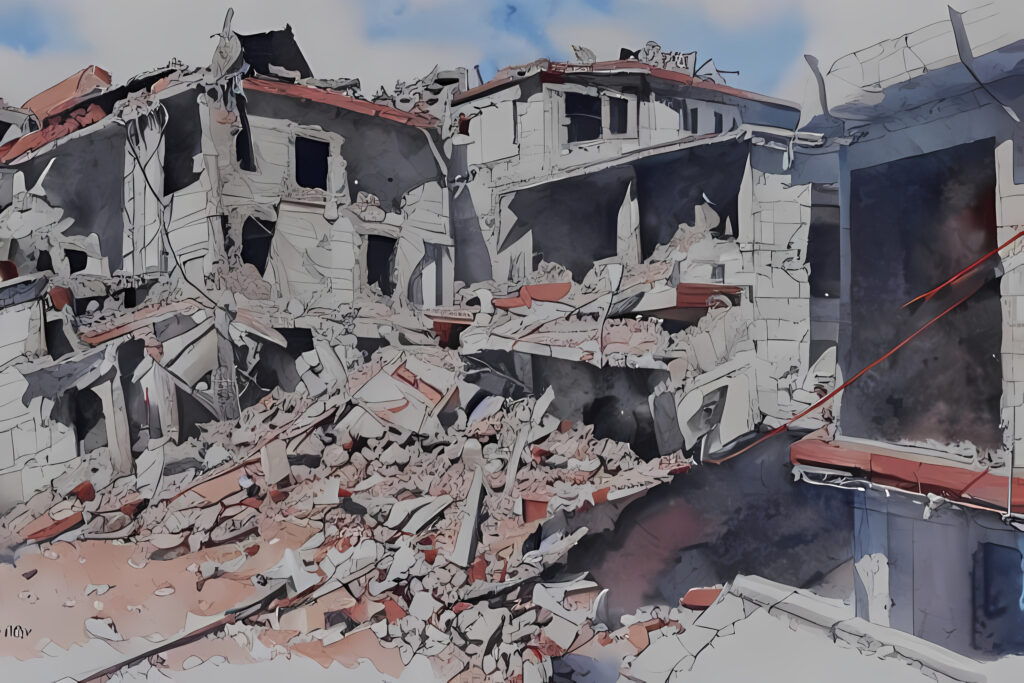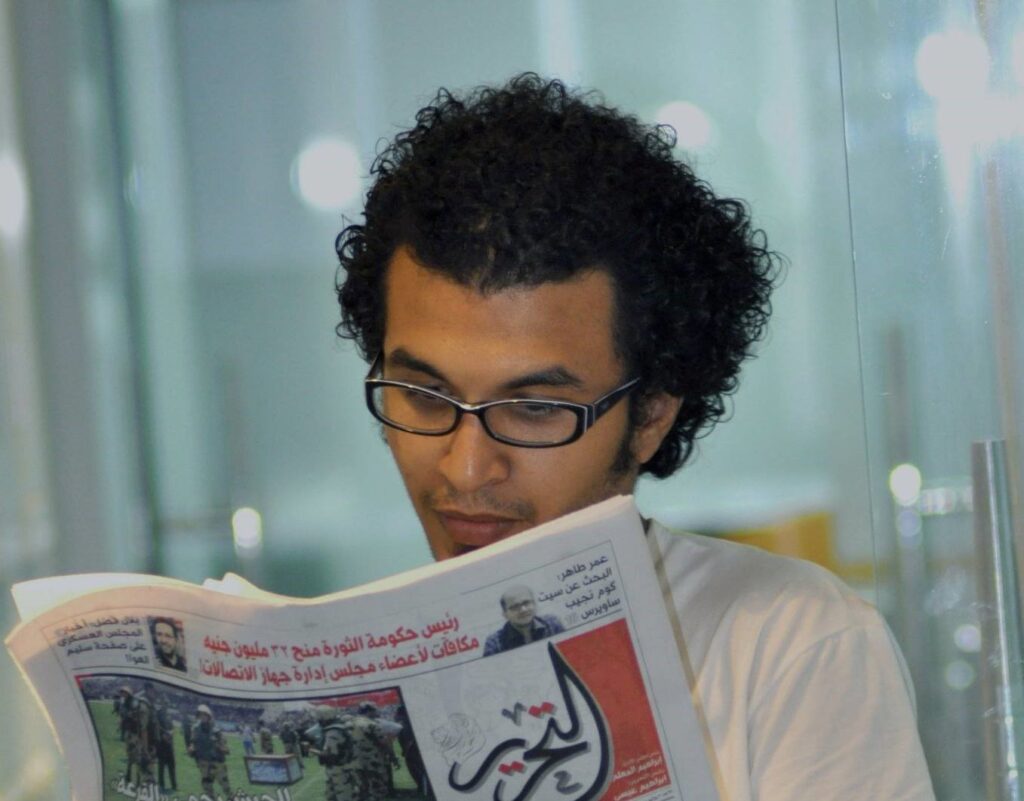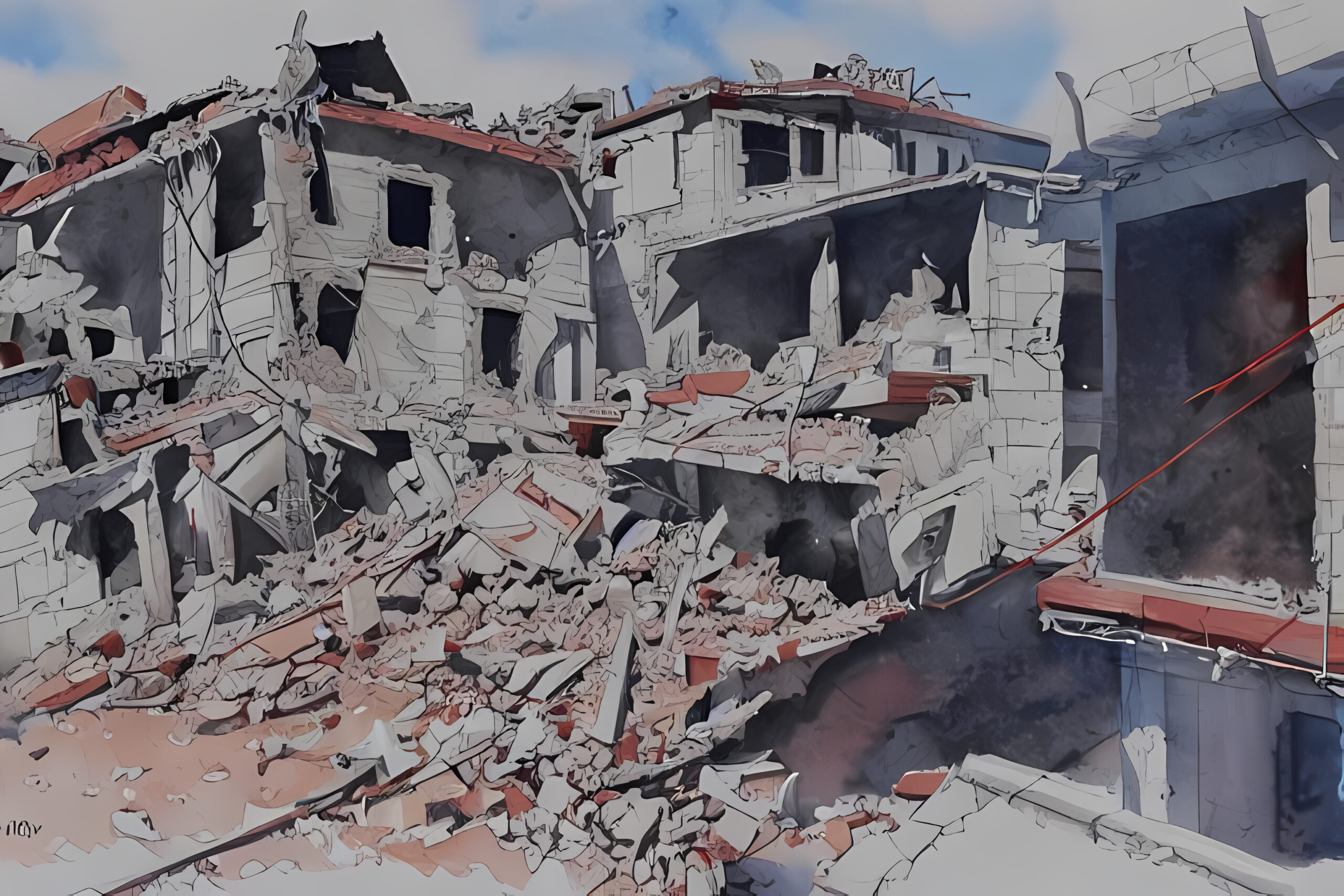In Giza, Egypt, the Armed Forces’ Engineering Authority has proposed a bridge project connecting Ahmed Orabi and the Mohandessin area, passing through the population centers of Kafr Barak al-Khiam and Nahia. According to an unofficial map obtained by a third party, the bridge will cross over Al-Qibli Street, an area renowned for its shops, extending 600 meters in length and 55 meters in width. If the project moves forward, it could result in the demolition of up to 1,200 homes located beneath and on either side of the bridge.
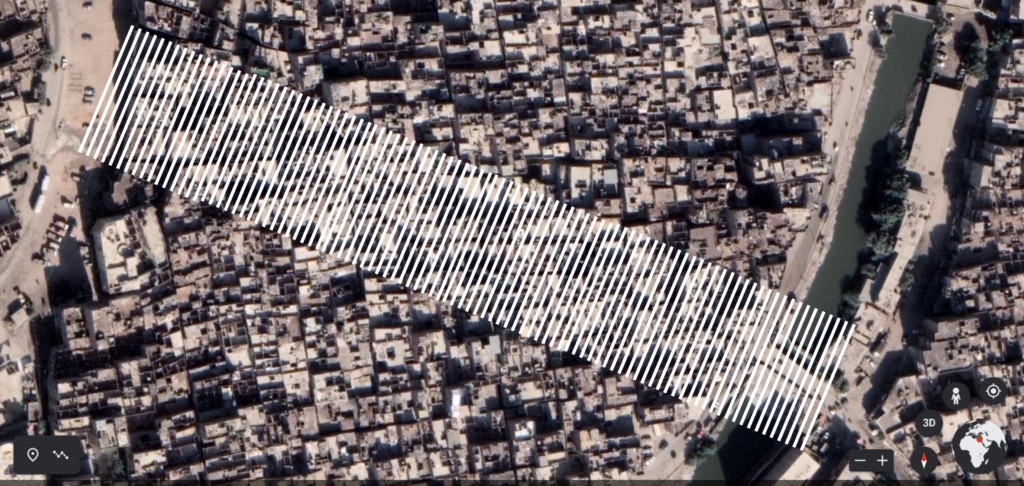
Residents in the vicinity of an upcoming bridge construction project have been given no official notifications of possible demolitions related to the project, and have started organizing protests to address the situation. A group representing the affected families was formed, including a regional representative from the People’s Assembly and an engineer from the village who proposed four alternative solutions that do not require displacing members of the community. The families have sent complaints to the city council, the Engineering Authority, and the Presidency of the Republic, but had no response until November 13 when officials finally agreed to meet with representatives of the affected people. The meeting was attended by Colonel Essam Afifi of the Engineering Authority and Dr. Ibrahim Al-Shihabi, Deputy Governor of Giza.
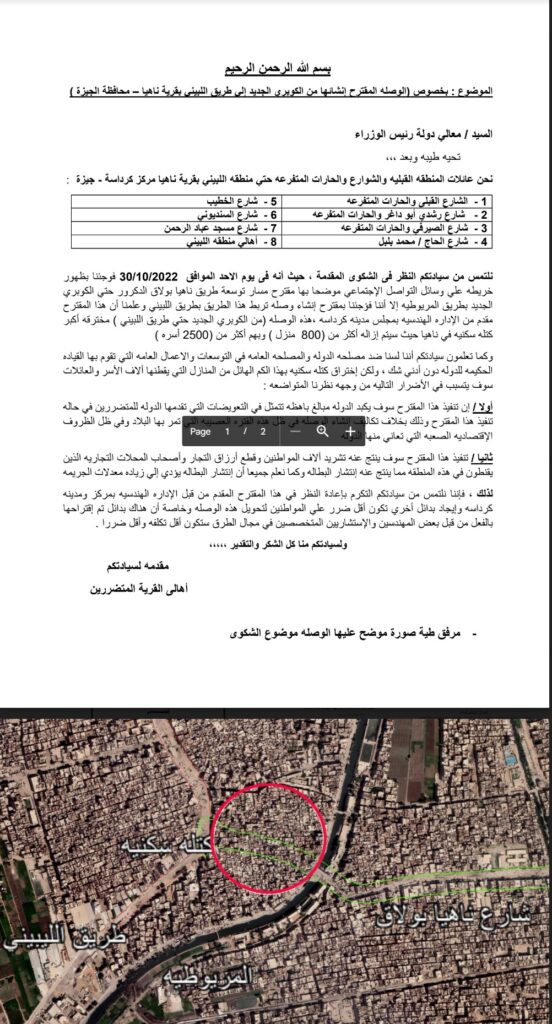
Residents of Nahya Village, Egypt recently discovered that the Survey Authority had marked their homes to be demolished with spray paint and symbols, ranging from S1 to S860. These markings have sparked demonstrations in the village to protest the imminent demolition. Radi Khaled, an architect in the area, noted that the Engineering Authority initially promised not to touch the homes, but it was merely a “calming down” gesture. On February 23, an advertisement was published in newspapers searching for contractors for house demolition operations in preparation for building the bridge. Khaled stressed that alternative methods were offered to officials to prevent the demolition of homes, but these were not taken into account. This has spurred further protests from the villagers as they continue to fight for their homes.
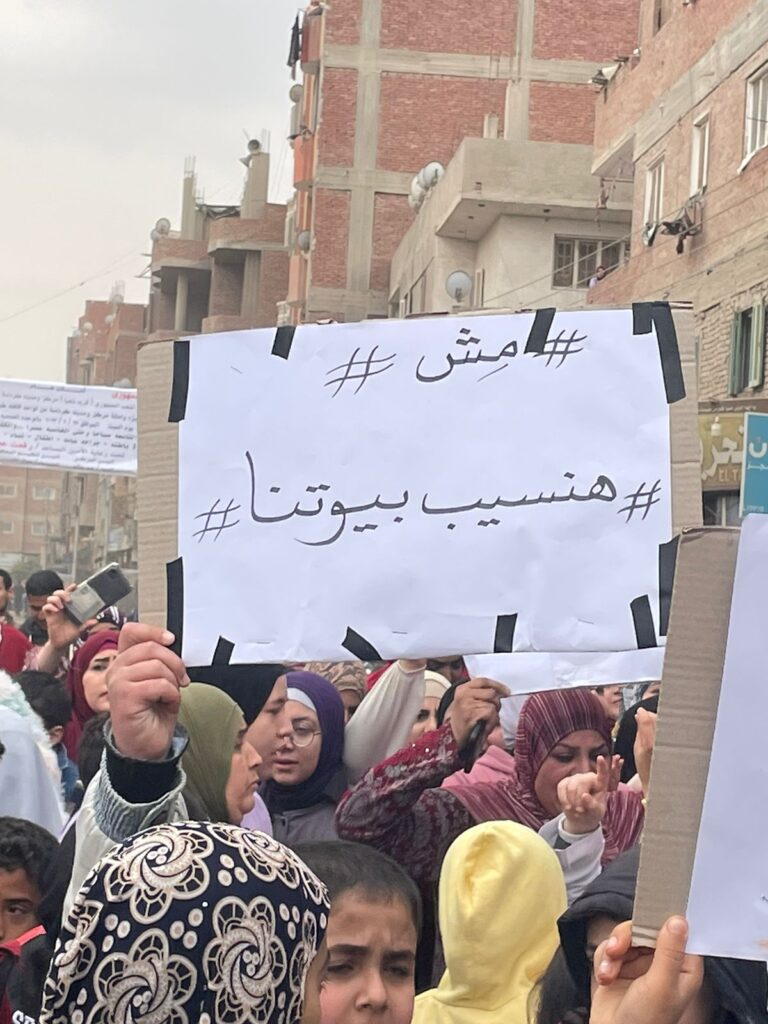
Hind Rashad, a member of the People’s Assembly for the constituency, and a consulting engineer have joined forces with the affected families of Nahia in a group to represent them. The proposal by the Engineering Authority, which involves demolishing homes and displacing people in order to build a branch road has been met with criticism. The engineer from the affected neighborhood stated, “We have better alternatives that do not require the demolition of homes or displacement of residents. This includes using existing roads that can be improved by paving or asphalt.” He noted that these alternatives are far more cost effective than the plans proposed by the Engineering Authority. He went on to accuse the government of silencing questions regarding the feasibility of other options and cited suspicious tenders regarding demolition that were announced in government newspapers. He ended his statement by noting the negative economic, social, and security impacts of their current plans, stressing that it would lead to a “real disaster” should it be implemented as is.
Residents of the village of Nahia, located on the western periphery of Greater Cairo, are refusing to accept the compensation offered to them by the government for their removal from the White Road expansion area. This is not the first time they have been put under the rails of the development train; previously, the people of the village had their homes exposed to campaigns. The social compensation provided was found to be insufficient and unjust, with some families receiving an allowance not exceeding 60,000 Egyptian pounds for a house worth more than one million. Even this amount was determined based on 25,000 pounds per room, minus 5,000 for the Long Live Egypt Fund. In addition, many were only given two installments of 30,000 – 60,000 pounds, and some received no financial compensation at all. The representative of the Nation’s Future Party, Tahani Rashad, promised to seek compensation quickly, but villagers are not satisfied with her proposal to give 65-square-meter units, which are too small for families of five and would cause them to become homeless or reliant on high rental fees in other areas. Agriculture is still a significant economic activity in Nahya, despite the decrease in agricultural area, due to its fertile soil. Other work opportunities include the carpet and textile industries and cement brick factories, with the proximity of the village to Cairo making it a source of daily labor and employment.

